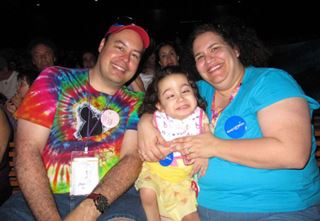 Our drive at the Coriell Institute for Medical Research is to better understand the human genome to improve human health. We supply the greater research community with biological samples from our world-renowned biobank. Coriell’s biobank includes samples from the National Institute for General Medical Science (NIGMS) Repository which represents hundreds of genetic disorders, including some of the rarest diseases known to science.
Our drive at the Coriell Institute for Medical Research is to better understand the human genome to improve human health. We supply the greater research community with biological samples from our world-renowned biobank. Coriell’s biobank includes samples from the National Institute for General Medical Science (NIGMS) Repository which represents hundreds of genetic disorders, including some of the rarest diseases known to science.
The NIGMS Repository was established at Coriell nearly 50 years ago and has grown through collaboration with scientists, patient families and rare disease advocacy groups. That advocacy can give patient families – families who have been dealt an often life-changing diagnosis – an opportunity to take charge of their situation, participate in research, and focus on the possibility of a better future for those affected by these diseases.
Perhaps no patient advocate represents this better than Carrie Ostrea.
Carrie’s daughter Hannah was born in the middle of summer in 2008 and initially appeared to be in great health. As Carrie explains on her foundation’s website, abnormalities began to appear during the first week. Hannah was checked into the neonatal intensive care unit for two weeks while doctors worked to find a diagnosis for her puzzling array of symptoms.
Carrie and her husband, Robert, worked in tandem, investigating likely genetic culprits and it was Robert who ultimately found her diagnosis - neuronopathic Gaucher disease type 2 or type 3. Hannah’s blood was tested for the disease, but the results ruled it out. It wasn’t until her fibroblast cells were tested, that the Gaucher type 2 or type 3 suspicion was confirmed.
“We were very motivated parents,” Carrie said. “Later, when Hannah was seven months old, we sat in the geneticist’s office and were told they didn’t have a lot of information to give us. They told us to take her home and love her because she wouldn’t live to see her first birthday. That’s when our mission kicked into drive because that was not acceptable to us.”
As Carrie soon learned, Gaucher disease is caused by mutations on the GBA gene, the gene responsible for producing an enzyme which breaks down fatty chemicals in the cell. Symptoms for the disease can include a low level of red blood cells, enlarged spleen and liver, lung disease and bone abnormalities. Gaucher disease types 2 and 3 also involve the central nervous system and can cause seizures and brain damage.
Carrie said by the time they had the diagnosis of Gaucher disease type 2, she already had her feet in the world of rare disease advocacy. Doctors first suggested Hannah might have Niemann-Pick Type C, so Carrie had reached out to Chris Hempel, an advocate whose twin girls had been diagnosed with that particular disease. Carrie said Hempel showed her the ropes of rare disease advocacy, gave her background on the brain and genetic science, and taught her how to collaborate with researchers.
Hannah beat the doctor’s prognosis and celebrated her first birthday. And her second and her third. She received a lot of therapy in that time, Carrie says in her blog, and Hannah especially took to the water, Minnie Mouse and playing on her iPad. All along, Carrie and Robert were doing all they could to find a treatment for their little girl. But by 2011, doctors and her family agree that Hannah’s condition had significantly worsened and that it was time for hospice care. She passed away in December of that year at home surrounded by the family who fought so hard for her.
Today, Carrie’s name rings out across the world of rare disease advocacy. She serves as executive director of the NGLY1 Foundation – a nonprofit that advocates on behalf of patients affected by NGLY 1 deficiency, another very rare genetic disease. She said she fights for NGLY1 patients now because of a friend she made during her advocacy work whose son has NGLY 1 deficiency. She also runs the Little Miss Hannah Foundation which advocates for all childhood rare diseases. Her husband, Robert, works on the legislative side.
“When you look at your child’s face, you don’t see a disease. Our children are more than their disease,” Carrie said. “Any child with a rare disorder deserves to be fought for. Not just children with Gaucher disease.”
Carrie said the work she did when Hannah was alive and now is important because it gives her hope and focus. It’s overwhelming to receive a diagnosis like she did with Hannah, but the work kept her and her entire family moving forward.
As for parents who find themselves where she and Robert were in 2008, she offers this advice:
“Balance your life. You’re going to have an overwhelming lifestyle. You’re going to become a researcher, a nurse, an appointment scheduler. You never thought you’d be these things, but you can do it,” Carrie said. “Find support through family or a rare disease foundation or families fighting a similar fight. You have to get comfortable in the spot you’re in before trying to tackle more. There’s so much to do, but you have to find balance.”
Carrie says cells from Hannah are still being studied by researchers in the US, Europe, Israel and Canada in the search of a treatment.
The Coriell Institute accepts samples from individuals with genetic diseases to add to its NIGMS Repository. Those samples are used in research by scientists around the world. For more information on how you can contribute, visit Coriell.org/NIGMS.
In photo from left to right - Robert, Hannah, and Carrie Ostrea